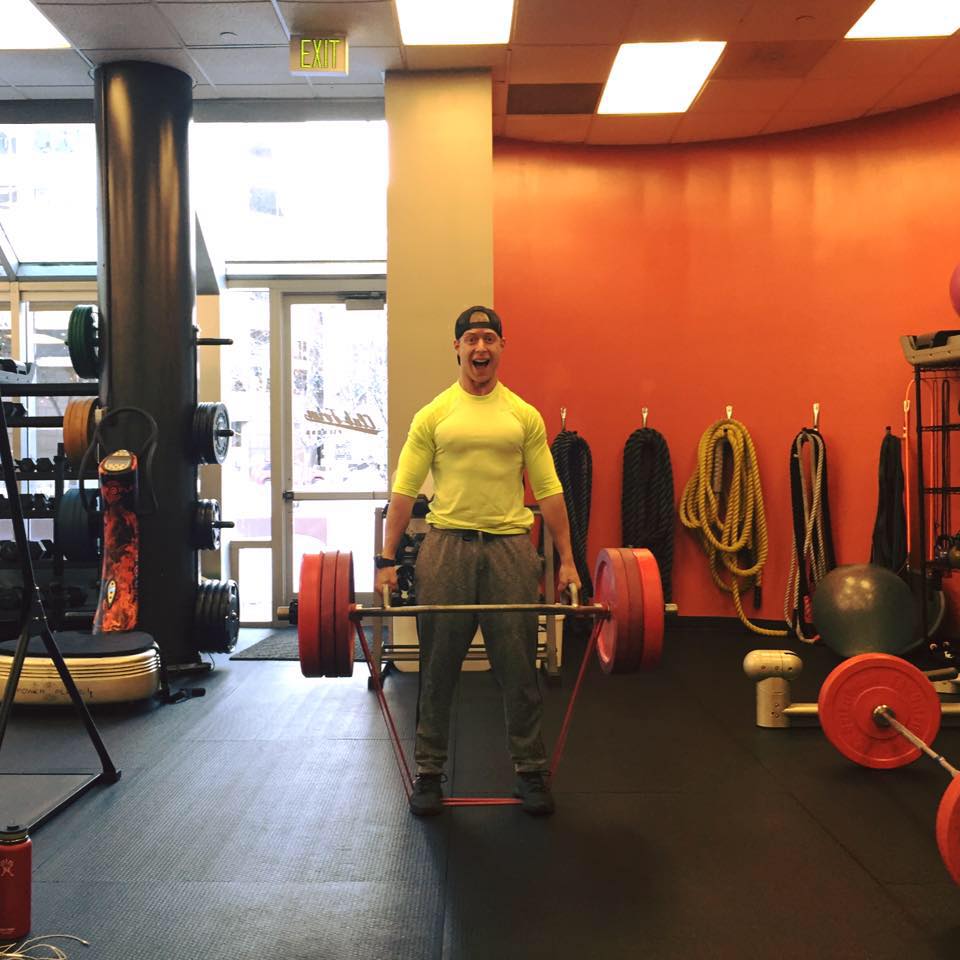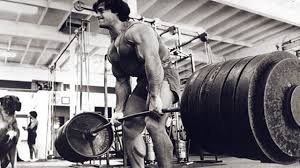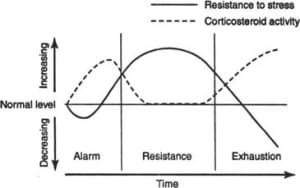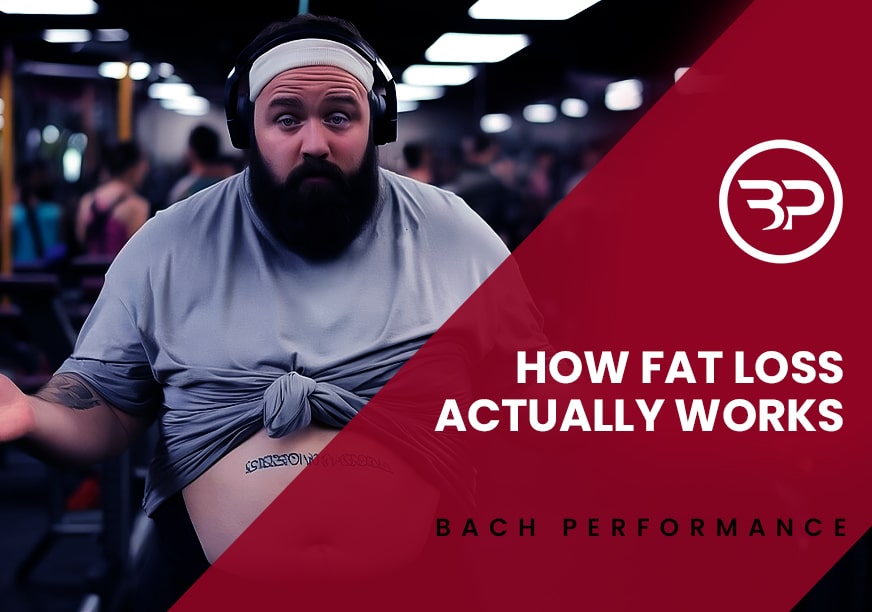14 Expert Tips to Build Muscle
April 14, 2015
I think you’ll agree with me when I say:
Few of us are lucky enough to have hit the genetic lottery for building muscle.
Some guys get huge with “one click” protein powder purchases and staring at a loaded barbell.
Here’s the kicker:
These lifters few and far between.
For the rest of us, we need years of dedicated training, eating, and recovery to gain a few pounds of lean mass.
You need to put in the time, stay consistent, and persevere through to reap the rewards of your iron labor. I’ve enlisted the help of some of today’s top Strength and Physique coaches to put together the top 14 Expert Tips to Build Muscle.
These methods are time tried muscle-building techniques with thousands of clients hours and dedication built to help you build mass.
Enough beating around the bush, implement these 14 expert tips to build athletic muscle mass.
1) Strength Improves Muscle Building Capacity
Building greater levels of strength creates an overload stimulus in the body, requiring adaptation to take place in response to stress to handle future stressors.
Muscle fibers break down and require repair. During repairs, the body forges a larger, stronger muscle fiber to be resilient to future stressors.
Stronger muscles and a super-charged nervous system allow the use of greater training loads to achieve greater levels of metabolic stress, mechanical tension, and muscular damage, which are the three primary methods of muscular hypertrophy, as shown in The Mechanisms of Muscle Hypertrophy and Their Application to Resistance Training (3).
Placing an emphasis on building strength directly builds muscle in beginners while advanced trainees will progressively build muscle as a byproduct of greater work capacity. Getting strong must be an emphasis if you’re looking to build muscle.
2) Incorporate Frequent Bodyweight Training to Build Muscle
Must guys jump the gun with endless isolation exercises and insane training programs without reinforcing the basics.
Before you jump into two-hour workouts and hammer every isolation exercise practice bodyweight exercises until you’re an absolute bad-ass at moving your body.
That means add in push-ups daily, get a doorframe chin-up bar, and do bodyweight squats.
For the love of god, please don’t kip, per the video below at 0.08:
https://www.youtube.com/watch?v=HOds38c4YNQ
Adding 50-100 push-ups to your daily routine before work or school is a great way to increase training volume in a few short minutes.
Incorporate mini-workouts throughout the week with your bodyweight and you’ll be pleasantly surprised by more muscle and better movement quality.
3) Vary Your Training Tempos and Rep Ranges
I’m a huge fan of lifting explosively to supercharge the nervous system and build power, but it’s not the only answer for building muscle.
Your muscles need tension from heavy and explosive lifts, but they also need metabolic stress and muscular damage to maximize muscle growth.

Start your workouts with an explosive exercise like jumps or throws, move to a pure strength movement for greater tension, and then incorporate longer duration sets for more metabolic stress and muscular damage.
The variation will challenge a greater number of muscle fibers to stimulate a greater growth response to help you accelerate hypertrophy.
4) Don’t Sweat the Olympic Lifts for building muscle
Bret Contreras of BretContreras.com
If you suck at Olympic lifts, don’t sweat it. As it pertains to muscle building, you’re better off sticking with exercises you already know that create a similar training effect.
In the case of Olympic lifts, we’re talking about explosive hip extension.
You will derive similar benefits from implementing the kettlebell swing and hex bar jump squats.
These two exercises have a rapid learning curve and yield similar joint torques and muscle activations compared to cleans, making them a more time efficient muscle builder.
5) De-Load to Reload and come back stronger
Until this week you’ve been adding slabs of muscle, and hitting personal records in the gym. Now, you’re fried.
Progress has stalled. Warm-up sets feel like a piano on your back, and motivation is fading. In fact, you’d rather try a Tracey Anderson workout than lift another barbell. What gives?
How Adaptation Works
To address the problem we look to the General Adaptation Syndrome (GAS) by Hans Seyle to analyze how changes in performance actually happen. GAS states that the body goes through a specific set of responses (short term) and adaptations (longer term) after being exposed by an external stressor.
The theory holds that the body goes through three stages, two that contribute to survival and a third that involves a failure to adapt to the stressor.
Deload frequency varies depending on the athlete, training age, goals, sport requirements, and number of workouts per week.
Here is a sample micro-cycle with a built-in deload. Volumes and intensities are for a compound exercise, such as a power clean and for the moderate-to-advanced athlete.
• Week 1: High Intensity/Low-Moderate Volume, 4×3, 85-92.5% 1RM
• Week 2: Moderate Intensity/Moderate-High Volume, 5×5, 75-85% 1RM
• Week 3: Very High Intensity/Low Volume, 4×3, then 2,2,1,
• 85-100% 1RM
• Week 4: Low Intensity/Low-Moderate Volume, 3×5, 50-60% 1RM
With more lifters, flip weeks one and two, and three and four, for better performance benefits during the highest intensity workouts.
• Week 1: Moderate Intensity/Moderate-High Volume, 5×5, 75-85% 1RM
• Week 2: High Intensity/Low-Moderate Volume, 4×3, 85-92.5% 1RM
• Week 3: Low Intensity/Low-Moderate Volume, 3×5, 50-60% 1RM
• Week 4: Very High Intensity/Low Volume, 4×3, then 2,2,1, 85-100% 1RM
Now, here’s the deal:
There is an inverse relationship between intensity (1RM) and the number of reps per set. Training in both manners, if you can even do it, is a recipe for overtraining. For this reason, varying intensity and volume through workouts is ideal to allow recovery and maximal effort.
On deload weeks training is still performed in an effort to preserve the neuromuscular pathways of training without actually breaking down the body. This works well for form and speed work to preserve form and muscle mass.
Cool, eh? That means yes, you can still do your glorious bench press or deadlifts on deload weeks, but not as heavy.
6) Modify your rest periods to fit your training goals
Few training variables get less respect in the gym than rest periods. Luckily, these exercise rest period guidelines will have you resting your way to gains in no time:
Don’t follow the same exercise rest periods for workouts ad-nauseum. As loading parameters and volume change so will the rest period and active recovery exercise.

If you’re torched after two minutes, take another minute. You know your body better than a timed rest-interval; however, keep exercise rest period in the ballpark to match your goals.
As it pertains to training for muscle gain it’s best to vary your rest periods. Strength plays a huge role in muscle building, but not all rest periods need to be 2-3 minutes when building muscle.
The pump and metabolic stress from short rest periods between sets is a vital stimulus for muscle growth as well.
According to Brad Schoenfeld, the accumulation of metabolites is the result of short rest and long tension exercises. These require the use of anaerobic glycolysis, resulting in the buildup of lactate, hydrogen ions, creatine, and other metabolites. So yes, if you’re looking to get jacked then a nauseating pump with short rest is perfect for training.
What’s the bottom line?
Training for muscle growth requires a well-rounded approach. Emphasize heavy weights/low reps (1-6), moderate weight with moderate reps (8-12), and the occasional higher rep sets (15+).
Hitting all rep ranges maximizes stimulation of the muscles to you build tons of muscle. Rest periods of 2-5 minutes, 45-90 seconds, and 0-30 seconds fit the various rep ranges, respectively.
7) Error: You eat too much food
Jason Maxwell of JMAXFitness
Most people think that most guys eat too little when trying to put on muscle. I feel like the pendulum has swung too far the other way. Now, guys eat too much food when trying to put on muscle.
- Denver
The problem with this is obvious: they end up getting fat. Just because you’re training hard, it doesn’t mean that you can eat 4000 Calories per day. Think about this logically for a second.
Research shows that the rate of muscle gain is dictated by how much training experience that you have. A beginner is able to gain 1-1.5% total body weight per month, an intermediate can gain 0.5-1% total body weight per month, and an advanced trainee can gain between 0.25-0.5% total body weight per month.
If you’re trying to put on muscle (without the fat), you only need to eat enough to gain muscle at the speed that you are capable of. For example, if you’re 200 lbs and are an advanced trainee, you might only gain 0.5 – 1 lb. of muscle per month (on average), so your nutrition should dictate this.
Using an approximated model, this means that you only need to be eating an extra 1750 – 3500 Calories per month. This is approximately an extra 58 – 117 Calories per day (above maintenance level).
That’s like two or three stinkin’ bananas. Two! Eat enough to build muscle, but don’t get out of control unless you want to pile on tons of body fat.
8) Train muscles according to their functional anatomy and fiber type
Menno Henselmans of Bayesian Bodybuilding
One piece of advice that’s extremely well received is not to train every body part the same way. Instead, you want to train each body part according to its functional anatomy and its muscle fiber type profile.
Each muscle has a different fiber type composition. Some muscles are fast twitch dominant while others are slow twitch dominant.
Muscle fiber type composition is largely genetically determined and has important muscle-specific training implications. Fast twitch fibers respond best to low volume, long rest intervals, high intensity, and low frequency.
Slow twitch fibers, in opposition, respond best to high volume, short rest intervals, low intensity, and high frequency.
Perhaps most importantly, fast twitch muscle fibers have significantly greater growth potential, roughly 100% more than slow twitch fibers. Even in untrained individuals, they’re normally over 20% larger, and it’s not uncommon for them to be over twice as large.
The fiber type composition of each muscle varies per individual, but as with most physiological characteristics, people don’t differ that much. In the general population, differences in the percentage of slow twitch muscle fibers are normally above 5% but usually below 10%. So, you probably aren’t that special in this regard, even though your momma said you were.
Find out the specific breakdown of muscle fiber type-based hypertrophy training check out this great post by Menno on JMAXfitness, and head to his personal blog.
9) Basic progressive overload is still king
It’s sad how many guys train for years yet remain the same size, still benching 135 for three sets of ten, year after year.
To make progress you must stress the system above what you’re currently doing whether it’s via more weight, more dense training, or a higher total volume.
Pick your program, stick with the same lifts, and add weight to the bar. Whether it’s 5 x 5, Starting Strength or 5/3/1, the principle is the same – stress the organism beyond its current capacity to create a higher level of stress.
As a result, the body creates stronger muscles, stores more fuel, and grows.
10) Optimize Your Workouts based on neural demands
When setting up any training program or workout, you need to place more neurologically demanding exercises early in the week, and early in each session.
In other words, neural demands are the requirements placed on the nervous system for the ideal execution of an exercise.
With high-speed and high weight exercises like sprinting, cleans, or a heavy deadlift the nervous system is the driver of performance.
If you’re blasting cleans with excess fatigue the nervous system fails to send signals to the muscles fast enough to allow technique execution of the exercise. This leads to missed lifts, altered technique, and potentially wreckin’ yo gains.

Keep the high-intensity exercises like sprinting, cleans, or near-maximal lifts with full recovery in the beginning of your workouts.
Exercises towards the velocity portion of the graph (i.e. speed) are obviously faster and more sensitive to changes in technique than slower speed exercises like heavy deadlifts or squats.
To get jacked to the max start your workout with explosive movement like sprints, jumps, or throws and then hit the weights to get stronger and create muscular damage to stimulate hypertrophy.
For more information on maximizing your workout for muscle gain check out this post for Roman Fitness Systems on exercise order for optimal muscle building.
11) Use Creative Monohydrate to improve work capacity
Creatine is arguably the best muscle-building supplement of all time as it directly improves your ability to perform short duration, high-intensity exercises like sprints and heavy weight lifting.
The body only stores a limited amount of creatine, so adding 5-10 grams daily will improve your work capacity on high-intensity exercises for a greater training response. As a result, you’ll be able to lift more weight for more reps to gain more muscle.
On workout days dose it pre and post-workout with your beverage of choice. Taking creatine with a protein or carbohydrate beverage increases absorption, as the increased insulin response will pull more creatine into the muscle tissue.

On non-workout days creatine works well in the morning with a drink such as green tea. Using a warm drink helps dissolve creatine better, so the bottom of your beverage doesn’t taste like a sandbox.
12) Micro progression is the Key to Macro-Results
Travis Pollen, the Fitness Pollenator
Eat more and get progressively stronger, it’s that simple. Consistently add weight to the bar and consume 300+ more calories than your baseline to promote an anabolic state and increase your work capacity.
While you’re at it, forget the bodybuilder split, and train your entire body every session: something for your legs, something for your core, a pushing movement, a pull, and occasionally, high-intensity intervals.
From week to week add a little weight and keep your eyes on the long term. A weekly increase of 5 lbs. on a lift would be 260lbs in a year, a massive improvement for anyone.
The progressive overload doesn’t need to be weekly, but it must be consistent. Building muscle doesn’t happen overnight, but string together several weeks and months of hard work, and gains will be aplenty.
13) High-Frequency Training Builds Mass Faster
Consistent exposure to stimuli is vital for learning new movement patterns, allowing you to become better at exercises faster.
While this doesn’t mean you should train every movement pattern daily, performing total body training routines a few times per week will accelerate hypertrophy is most lifters.
Back in 2000, a study compared 1 day and 3-days per week of equal-volume resistance training (McLester, et al 2000). Twenty-five experienced subjects were randomly separated into training groups.

Group one performed one day per week of strength training with three sets to failure, using rep ranges moving from three to ten reps per set. Group two performed workouts three days per week with one set to failure per day, while working in the same rep ranges.
Training volume between the two groups was the same, yet group two had greater increases in both lean body mass and improved one-rep max strength. With total volume held constant, spreading the training frequency to three doses per week produced superior results in both strength and muscular hypertrophy.
A 2010 study on anabolic processes in human skeletal muscle found that repeated phases of net protein balance, which can be a generated response to repeated bouts of resistance exercise and protein ingestion, underpins muscle hypertrophy (Phillips, S., & West, D., 2010).
This shows that frequent exposure to training increases protein synthesis at the cellular level, leading to greater amounts of muscle growth.
14) Hammer the Basics, Then Get Creative
Bryan Krahn, the man behind BryanKrahn.com
There are two big stumbling blocks for guys looking to get big: lack of respect for the essentials, and a lack of creativity.
For the first one, you have to do the bodybuilding basics before all else. That means eating a significant calorie surplus, lots of protein, a good amount of “good” fat, and reasonably frequent meals.

Yet people seem to want to “hack that” — they want to fast most of the day and shovel food at night, or do some weird macronutrient cycling voodoo, or use overly hyped supplements.
What a waste of time. Even if what you’re doing works — and it might — why risk it when you can just do what others before you have done. And grow.
The lack of creativity stems from your body’s ability to adapt. Even the absolute best workout will eventually quit delivering results, cause your body has adapted it. So you have to change exercises up, use different rep ranges, exercises, rest intervals, even tempos.
And you have to stop just training your strengths. Maybe getting your chest to finally “grow again” requires strengthening your “unsexy” upper back? Or maybe it requires simply learning to “bench for a big chest instead of a strong bench press.”
It all boils back to humility. Accepting that you don’t know everything yet, and that some others before you are light years ahead of you.
Wrap Up Expert Tips to Build Muscle
Consistent, hard training in the presence of enough calories is a no-brainer to accelerate hypertrophy.
Coupled with these tips, you’re truly setting yourself up for success to finally build the strong, shredded, and athletic body you desire.

• Strength Improves Muscle Building Capacity
• Hammer the Basics, Then Get Creative
• Error: They eat too much food.
• Train muscles according to their functional anatomy and fiber type
• Don’t Sweat the Olympic Lifts for building muscle
• Use Creatine: You should be anyways for the numerous health benefits that are beginning to appear.
• De-load
• Modify rest periods to fit your goals
• Multiple Tempos/ Set Durations
• Train with a High Relative Frequency
• Micro progression is the Key to Macro-Results
• Optimize Your Workouts based on Neural demands
Train Smarter, Train Harder, Perform Better
Building a high-performance body can be difficult. But, it doesn’t have to be.
Join our Private Facebook group, it’s free.
AND WILL HELP YOU LOOK BETTER NAKED ????
OUR COMMUNITY IS FOCUSED ON SIMPLIFYING FITNESS SO YOU BUILD YOUR STRONGEST, LEANEST, AND MOST ATHLETIC BODY…WITHOUT ALL THE INFORMATION OVERLOAD.
Resources:
McLester, J., Bishop, E., & Guilliams, M. (2000). Comparison of 1 day and 3 days per week of equal-volume resistance training in experienced subjects. The Journal of Strength and Conditioning Research, 14(3). Retrieved from http://journals.lww.com/nsca-jscr/Abstract/2000/08000/Comparison_of_1_Day_and_3_Days_Per_Week_of.6.aspx
Phillips, S., & West, D. (2010). Anabolic processes in human skeletal muscle: restoring the identities of growth hormone and testosterone. Physician and Sportsmedicine, 38(3), 97-104. doi: 10.3810/psm.2010.10.1814
Schoenfeld, Brad. “The Mechanisms of Hypertrophy and Their Application to Resistance Training.” Journal of Strength and Conditioning Research. 24.10 (2010): 2857. Web. 21 Nov. 2013.
Find This Article Helpful?















[…] 14 Expert Tips to Build Muscle — Eric Bach & Others […]
[…] on building muscle: 14 expert tips […]
[…] 14 Expert Tips to Build Muscle (Article) […]
All the tips are nice and helpful for one who need to build his muscle. I am agree with your 14 tips. Would you like to tell me how many hours I should give for workout? Is it necessary to workout each day of a week.